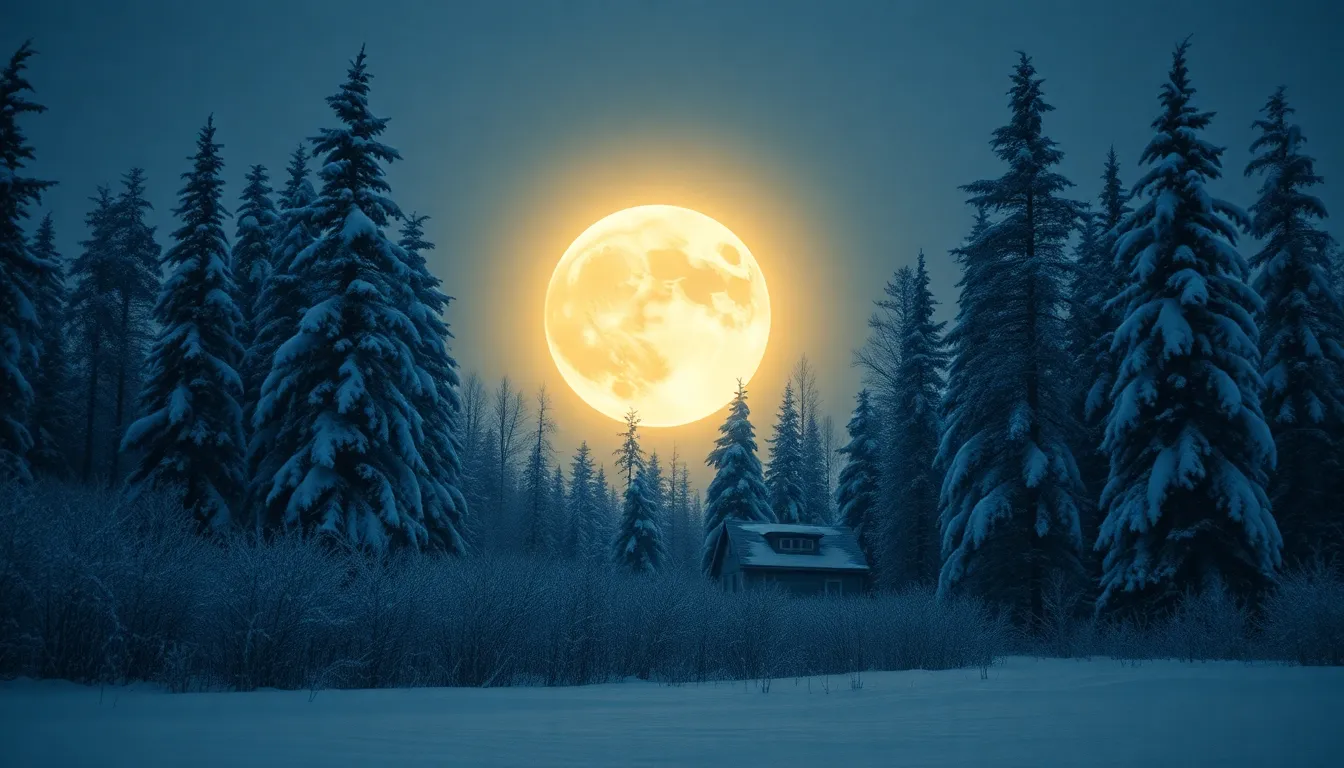If you’ve ever found yourself gazing at the night sky, wondering when the next full moon will light up your life, you’re in for a treat. The year 2025 promises to be a celestial spectacle, with full moons that could inspire everything from midnight picnics to romantic stargazing. So grab your calendar and prepare for a lunar adventure!
Table of Contents
ToggleWhen Is Next Full Moon 2025
The full moons of 2025 create opportunities for memorable experiences. Each month features a distinct full moon, often associated with specific cultural names and themes. Planning outdoor activities around these dates enhances enjoyment.
- January 25: Known as the Wolf Moon, January’s full moon brings the winter’s chill.
- February 24: The Snow Moon follows, signaling the peak of winter’s snowfall.
- March 25: This month boasts the Worm Moon, named for earthworms emerging as spring arrives.
- April 24: The Pink Moon signifies the blooming of wildflowers.
- May 24: The Flower Moon represents the abundant growth of flowers at this time.
- June 23: The Strawberry Moon marks the season for harvesting strawberries.
- July 22: The Buck Moon follows, named for male deer growing their antlers.
- August 19: The Sturgeon Moon pays homage to the fish abundant in freshwater lakes.
- September 17: This month’s full moon is called the Corn Moon, honoring the corn harvest.
- October 17: The Hunter’s Moon indicates the time to hunt for winter provisions.
- November 15: The Beaver Moon focuses on preparing for the colder months.
- December 15: The Cold Moon reflects the onset of winter’s chill.
Marking calendars for these full moon dates facilitates planning for nighttime adventures under the vast sky. The magic of full moons offers inspiration for midnight picnics and stargazing sessions.
Full Moon Dates in 2025

Full moons in 2025 offer distinct experiences, each tied to cultural themes and traditions. Here are the specific dates and details for each month’s full moon.
January Full Moon
The first full moon, known as the Wolf Moon, occurs on January 11. Traditionally, this name derives from the howling of wolves during the winter’s harshness. Observers can enjoy bright lunar light illuminating the winter landscape.
February Full Moon
The Snow Moon shines on February 9. This moon takes its name from the heavy snowfall typical of this month. Stargazers can appreciate its prominence in the night sky, creating a magical winter scene.
March Full Moon
The Worm Moon appears on March 10. It marks the time when worms begin to emerge as the earth thaws. This full moon often symbolizes renewal and the approach of spring.
April Full Moon
The Pink Moon rises on April 8. Its name comes from early spring flowers. As blooms start to unfold, viewing this full moon highlights the beauty of nature awakening.
May Full Moon
May’s Flower Moon occurs on May 7. This moon reflects the abundance of flowers in bloom during the month. It serves as a wonderful reminder of the season’s vitality.
June Full Moon
The Strawberry Moon is visible on June 5. Named for the season’s strawberry harvest, this full moon signifies summer’s arrival. Its bright glow often inspires outdoor celebrations and activities.
July Full Moon
The Buck Moon takes place on July 5. This moon is named for the antlers of male deer that grow during this period. Observers can witness the richness of summer nights under its light.
August Full Moon
August features the Sturgeon Moon on August 3. Named after the fish prevalent in the Great Lakes, it highlights the abundance of summer’s bounty. Many people find joy in fishing or swimming during this time.
September Full Moon
The Corn Moon shines on September 2. This name reflects the time for corn harvesting, marking a crucial agricultural moment. It’s an ideal time for gathering and celebrating the fruits of labor.
October Full Moon
The Hunter’s Moon is visible on October 1. This full moon signifies the best time for hunting and preparing for winter. Its bright illumination provides guidance during nighttime outdoor activities.
November Full Moon
The Beaver Moon occurs on November 30. Traditionally associated with preparing beaver traps, this moon serves as a signal for upcoming winter preparations. This time indicates nature’s readiness for dormancy.
December Full Moon
The Cold Moon graces the sky on December 29. It signifies the long, cold nights of winter, serving as a reminder of hibernation and reflection. Many find comfort in the consistent glow of this moon during dark times.
Significance of Full Moons
Full moons hold important cultural and scientific significance, capturing human interest throughout history.
Cultural Importance
Many cultures celebrate full moons with festivals and rituals. January’s Wolf Moon often symbolizes a time of reflection, while the Snow Moon in February connects to winter survival. Communities gather under the Pink Moon in April to mark the beauty of spring. Various names for each full moon highlight seasonal changes and agricultural cycles. For example, the Harvest Moon in September signifies a time of gathering crops, while the Cold Moon in December reflects on the year’s end. These traditions help foster a sense of community and connection to nature, inspiring shared experiences under the luminous night sky.
Scientific Observations
Scientific observation during full moons offers unique insights into lunar effects. The full moon’s brightness impacts nocturnal animals, altering their behavior patterns. Research indicates that some species evolve adaptive strategies to thrive during these bright nights. Moreover, tidal patterns also shift due to the moon’s gravitational pull. These shifts can influence the timing of spawning for various marine species. Astronomers utilize full moons to study the lunar surface and assess moon phases’ effects on Earth’s environment. Emphasizing these observations fosters a deeper appreciation of the moon’s role in ecosystems and our planet’s dynamics.
Tips for Moon Watching
Moon watching offers a captivating experience, especially during full moons. Observers can enhance their enjoyment by following some practical tips.
Best Viewing Practices
Select a location away from city lights for optimal visibility. Open fields or elevated areas provide clearer views of the night sky. Checking the weather forecast ensures clear conditions for moon viewing. Timing plays a crucial role; plan to head out just before moonrise for striking views. Understanding the moon’s position in the sky helps locate it easily. Wear warm clothing during colder months since temperatures often drop at night. Finally, bringing a blanket can enhance comfort during longer viewing sessions.
Tools for Observation
Using binoculars provides a closer look at lunar details, such as craters and maria. A telescope can amplify the viewing experience even further, revealing intricate surface features. Mobile apps offer real-time tracking of celestial objects, assisting observers in locating the full moon. A good camera captures stunning lunar photographs, making memories tangible. Carrying a notebook allows jotting down observations or sketches during the experience. Flashlights with red filters prevent loss of night vision while setting up. Observers should consider these tools for a more immersive and enjoyable moon watching experience.
The full moons of 2025 offer a wonderful opportunity to connect with nature and create lasting memories. Each month brings a unique lunar event that can inspire everything from quiet reflection to lively gatherings. By marking the dates and preparing for each full moon, individuals can fully embrace the magic of these celestial moments. Whether it’s a cozy evening under the stars or an adventurous outing, the full moons promise to enhance the experience of the night sky. Engaging with these lunar phases not only enriches personal enjoyment but also deepens appreciation for the rhythms of nature.




